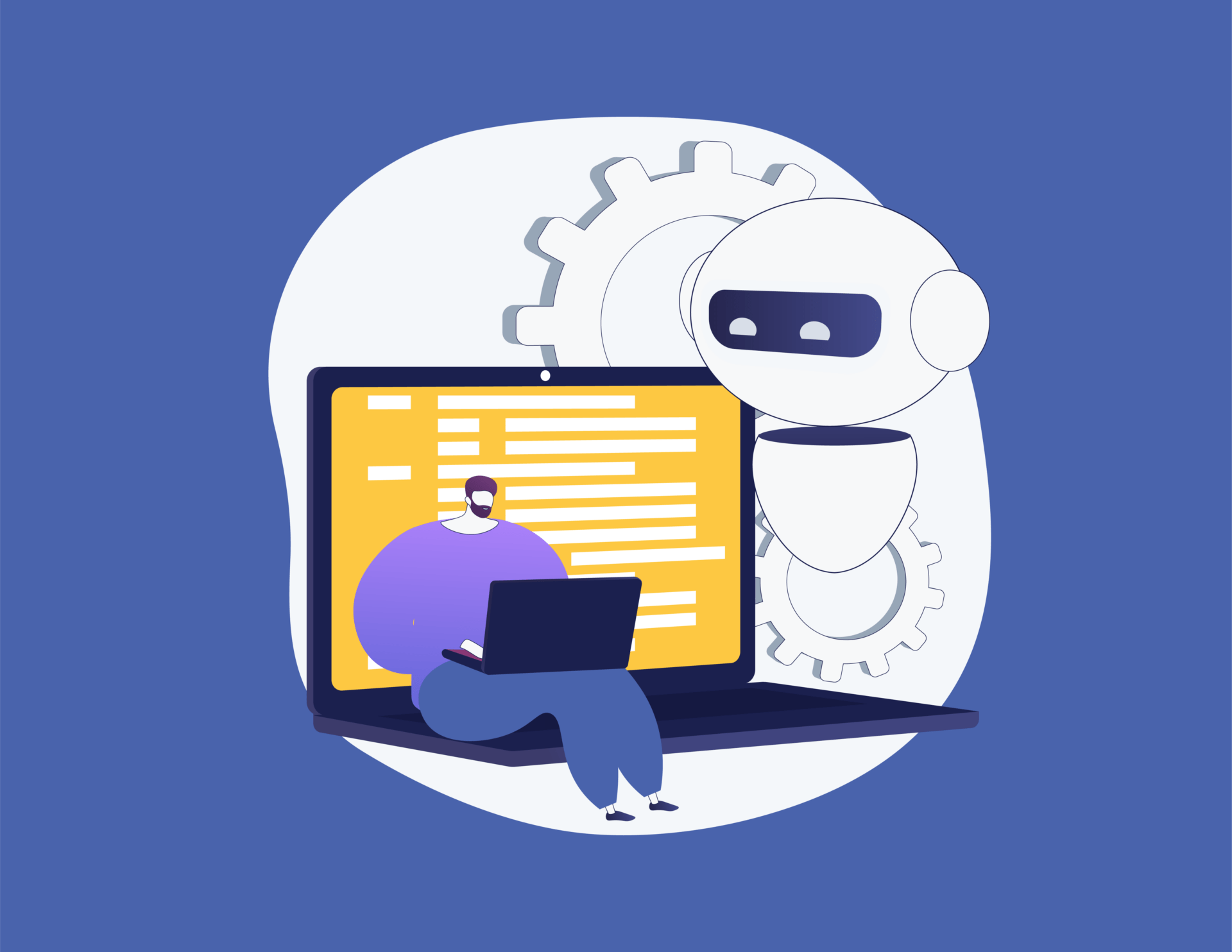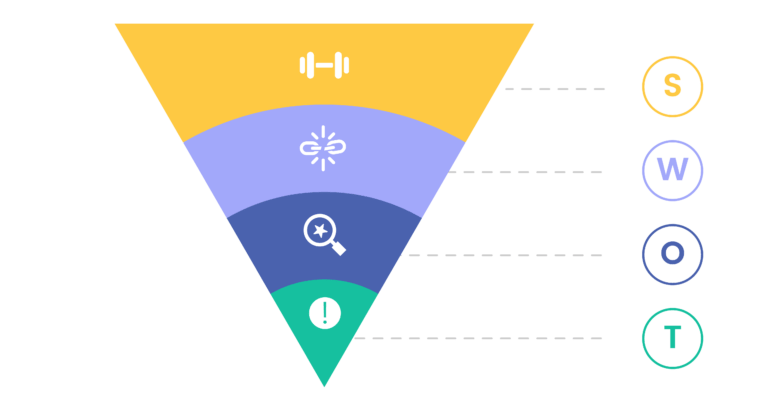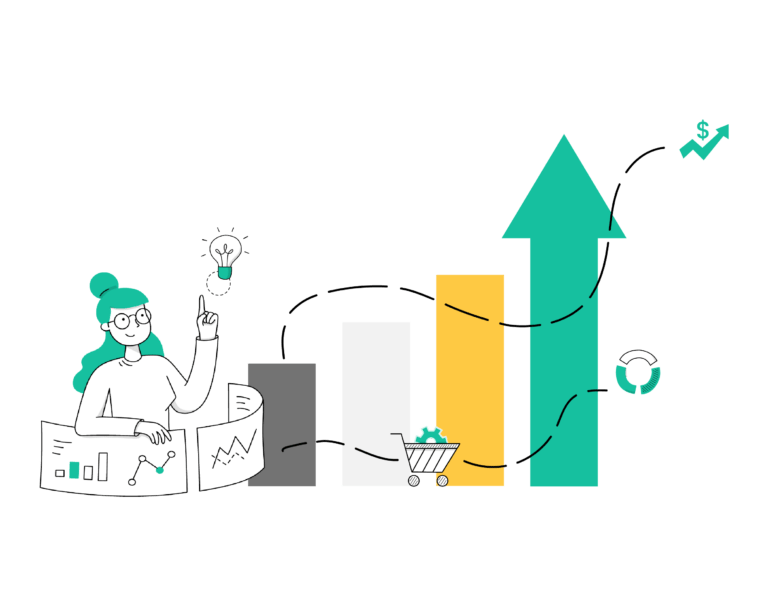Businesses are always looking to improve their operations, achieve more with fewer resources, and cut costs. Artificial intelligence and machine learning can help with all these things. The even better news is these technologies are now advancing at a rapid rate, which is opening up even more opportunities. This has implications for all industries and a wide variety of business processes.
What Do We Mean By Artificial Intelligence and Machine Learning?
Although many people use the terms artificial intelligence (AI) and machine learning (ML) interchangeably, there are significant differences between the two.
When we talk about AI, we’re referring to an algorithm or process that enables a program to imitate intelligence to solve problems and learns to improve over time. Common examples of AI you may interact with in your daily life include search engines, personalized recommendations (such as on streaming services), personal assistant programs (like Siri), and self-driving vehicles.
ML is specifically the capability of AI to improve as it interacts with users and provides solutions. The most basic form of ML is called supervised learning: when data scientists provide the program with information, they also give it examples of desired outputs. More advanced forms of ML are unsupervised learning (where the program receives inputs but must search for patterns itself) and reinforcement learning (where the program receives no training but learns through positive and negative reactions when interacting with its environment).
The Benefits of AI and ML for Businesses
Some business tasks are impossible without AI. Whereas it was once possible for employees to process all the data a company received, those days are long in the past. In 2020, International Data Corporation predicted the world would generate more than 59 zettabytes (or one billion terabytes) in a year. The only way to manage even a tiny fraction of so much data is with AI and ML. These capabilities provide a range of benefits for all kinds of businesses.
Improved Efficiency
A human team will only work during business hours and needs to take regular breaks. AI never stops — and it’s faster to begin with. This leads to much higher productivity. Programs can even generate information employees need to minimize downtime.
Better Decision Making
The improved understanding you gain from AI can help you make better decisions. For example, insights may reveal bottlenecks or opportunities or show you which of the tactics you are currently using are the most effective.
Improved Employee Engagement
Employees want to work on interesting projects that constantly present them with new challenges to overcome. Some amount of repetitive work is always unavoidable (unless you delegate tasks to someone else), but you can significantly reduce repetitive work with automation and other AI capabilities. By keeping your employees engaged, they’ll be more productive, produce work to a higher standard, and have higher job satisfaction, which often means lower turnover.
Fewer Errors
Even the most careful human will make the occasional mistake. When you use AI, however, errors are unlikely because you eliminate the manual input of data and the carrying out of calculations.
Fast Scalability
If you want to scale your business with short notice, AI can help. You simply need to employ automation, chatbots, and other AI-powered programs to carry out more operations. Plus, ML means processes will improve over time, allowing you to keep scaling up without any additional expense.
Reduced Costs
Many of the above lead to a reduction in costs. For instance, reduced employee turnover saves money on recruiting and onboarding new team members, whereas a lack of errors and improved insights results in better investment decisions.
Ethical Considerations for Using AI and ML
Using AI and ML in business is not without its problems. In particular, there are some ethical considerations to bear in mind.
Machine Biases
AI may give different outputs depending on the users whose data make up the inputs. Frequently, biases are in terms of ethnicity, gender, age, and nationality. This happens when the program receives flawed training data. Correcting the problem is possible by giving the program more data to correct the biases — but this can only happen when the developer or users notice there is an issue. The risk is this can perpetuate inequalities, hurt your relationships with certain groups of customers, and result in poor business decisions.
Transparency and Privacy
Another way AI could harm your relationship with customers is if they’re unaware you’re using their data. It’s important to be transparent about what AI systems you have and, whenever possible, allow customers to opt in to data collection. Furthermore, to keep customers’ data safe, it’s crucial you only use the information as you specify you will and do not allow third parties to use it.
Potential Job Displacement
Automating enough tasks could mean businesses can manage with smaller workforces. In addition to the ethical considerations of replacing people with machines, you need to consider the knock-on effect this will have on those who remain. They may feel demotivated when their team shrinks, which could impact company culture. Some workers may worry about the security of their own jobs and seek a position where they feel more protected.
How to Implement AI and ML Technologies at Your Company
To bring the power of AI and ML to your company, you need to think carefully about what kind of technology you need, where you can acquire it, and how you can implement it without suffering from undesirable consequences like ruined relationships with customers or an increase in staff turnover. You’ll also need to overcome data privacy and security challenges.
Step 1: Be Aware of the Capabilities and Limitations of AI
Although AI is powerful, it’s far from having unlimited capabilities. You need to be clear about what it can do for companies like yours, which you can find out by researching how your industry is currently using AI. The last thing you want is to adopt an AI program that brings you no benefits because the technology is not yet advanced enough to carry out the functions you want.
Step 2: Determine Why You Need AI
Even with its limitations, it’s likely there are far too many potential uses of AI for you to implement them all — at least straight away. In particular, you may be restrained by your budget. Whereas AI will ultimately save you money, it may have significant upfront costs. It may be worth implementing something simple to start with and adding more capabilities later.
As with every new technology you implement, AI should align with your larger business goals. Decide how you’ll use AI by determining what processes are currently wasting the most time or leading to poor results. If you’re unsure about how you could use AI, talk to your employees about their greatest challenges and time sinks. In addition, consider your budget.
Step 3: Choose the Right Developer or Vendor
Whether you choose to build a program from scratch or purchase a premade system, you’ll need to find the right developer or vendor. Choosing someone trustworthy will prevent problems like data breaches and system failures that could have a significant impact on your company, both financially and in terms of your reputation. The best vendor will also offer training to ensure your staff knows how to use the AI system.
Step 4: Test the Program
Set a test period to try out your AI system to determine if it’s producing the kinds of results you wanted. How you measure results will depend on the purpose of the program. For instance, you may look for greater productivity in your employees, higher customer satisfaction, or more sales.
Step 5: Make Adjustments
Use the above insights to decide where to take AI next. You may need to make small adjustments to your current program or you may like to start thinking about how you could use AI in other business processes.
Examples of AI and ML Uses in Business
Whereas some applications of AI and ML are useful for businesses in a variety of fields, others are specific to particular industries. Being aware of the different uses can help you come up with ideas for how to implement AI and ML into your own business processes.
1. Customer Relationship Management
Maintaining a customer relationship management (CRM) system requires a great deal of time for sales teams. AI can reduce the workload by updating the system and even making corrections automatically.
2. Fraud Detection
Financial institutions like banks can use AI to detect fraudulent activity. In these applications, AI uses ML to figure out patterns in behavior that indicate fraud. When the system is fed a large amount of data, it becomes proficient at flagging fraudulent purchases. This prevents loss for the company and maintains customer satisfaction by allowing non-fraudulent transactions to pass through unheeded.
3. Cybersecurity
Cyber attacks are increasingly becoming a risk for businesses of all sizes and in all industries. It’s important for businesses to increase their defenses to protect their data and avoid ransom demands. AI can help by providing threat detection. The learning process is similar to that of fraud detection: the program receives data about what patterns indicate a threat. The AI system can then respond by either alerting the appropriate person or taking action itself. Unlike humans, AI can monitor systems at all times and process huge amounts of information to identify potential threats.
4. Product Recommendations
You’re more likely to keep shoppers engaged if you make recommendations for products according to users’ behavior than if you give everyone the same recommendations. All types of businesses in the ecommerce sector can benefit from this use of AI.
5. Improved Patient Outcomes
AI has huge significance for all types of healthcare businesses, as it can improve patient care. For instance, by using data to provide faster, more accurate diagnoses, hospitals and clinics can see better outcomes. Some applications of predictive analytics can even be life saving.
6. Customer Support
It’s often unnecessary for humans to provide customer support, particularly when a customer just needs help locating information available on the company’s website or is seeking an answer to a commonly-asked question. Chatbots on social media and websites may even be the main way customers interact with some companies.
7. Claims Processing
There’s a risk customers may be dissatisfied with an insurance company if it takes a long time to process a claim. This can lead customers to seek another insurer when it’s time to renew their policies. AI can automate the claims process, leading to much faster resolution and providing customers with a better experience.
8. Audience Segmentation
When leads require nurturing before they’re ready to purchase, audience segmentation is crucial for presenting the right message. AI can determine what campaigns are likely to be effective with a particular user.
9. Manufacturing
Intelligent automation enables companies to manufacture the number of products they’re likely to need based on market forecasting. It’s possible to combine this with robotics in a type of AI called robotic process automation (RPA). One example of a sector using RPA to a large degree is the automotive industry. Companies use this kind of AI to minimize the number of human workers they need, which results in lower costs and fewer injuries.
10. Energy
There are various ways for energy companies to use AI to bring down costs both for themselves and for their customers. For instance, AI in smart grids can monitor customers’ energy needs and respond to problems to reduce downtime and conserve energy. Power plants also use AI for predictive maintenance models and to improve their field operations.
11. Research
AI improves online research by basing the results it displays on users’ previous searches and behavior. ML means experiences can constantly become more customized to the user. Companies can use this to help information find the user rather than the reverse. In particular, this has implications for small businesses that are targeting a specific audience, such as local businesses and those working in a narrow niche.
12. Drug Development
Businesses can also benefit from using AI for research, such as in the case of drug development. Without AI, drug development requires large teams of scientists devoting years to research. AI can process huge amounts of data to determine what compounds and quantities are likely to lead to effective treatment.
13. Supply Chains
Difficulties with supply chains can mean customers fail to receive products on time, which leads to dissatisfaction with the company. AI can provide more accurate predictions about how long each stage is likely to take. In addition, it can estimate possible changes to costs for materials and shipping over the upcoming months — another factor that can influence supply chains. Businesses can use this to better inform their customers and to come up with solutions to speed up shipping. Finally, at the end of the supply chain, delivery drivers can use AI to optimize their routes in real time.
The Future of Virtual Assistants: How AI and ML Will Revolutionize Business Operations
An area where AI is able to help all types of businesses is in virtual assistance. AI-powered virtual assistants are already able to support professionals in multiple ways, including in:
- Chatbots. AI can take over customer support when the query is simple, especially when it’s a common question. Someone on your team can step in only when a customer requires help with a complex problem or needs personalized support.
- Voice assistants. Speech recognition and natural language processing allow users to request support without needing to type.
- Speech-to-text and text-to-speech applications. AI can now transform speech into text (and vice versa) with great accuracy.
- Augmented reality. Being able to overlay imaginary three-dimensional objects into the real world is useful for much more than entertainment purposes. For instance, it has great potential for design and explaining ideas to clients.
In the future, we can expect these capabilities to become more powerful and for AI virtual assistance to gain additional functionalities to handle more complex tasks. In particular, we’ll be able to gain more personalized recommendations based on self-learning algorithms and use predictive analytics to determine likely customer behaviors or future market trends with greater precision than is possible today.
However, AI virtual assistants will never eliminate the need for humans entirely. As well as certain tasks being too complex for machines, ongoing maintenance will be a requirement to ensure performance is optimal. For instance, someone may need to step in and make changes if AI is showing biases.
AI virtual assistance is still in its early days, meaning it has limited capabilities. Although it is able to take over many basic tasks, it’s unable to carry out complex work that’s still time consuming and tedious for you — such as running ad campaigns on social media, directing phone calls, and conducting in-depth prospect research. Plus, since there are no copyright protections when AI creates content, you still need humans for graphic design and any written content you want to publish on your website. You can receive all these tasks (and many more) from the human virtual assistants at myVA360. Our virtual assistants can take on a full range of administrative, executive, and marketing tasks. Schedule your free trial to see for yourself.










